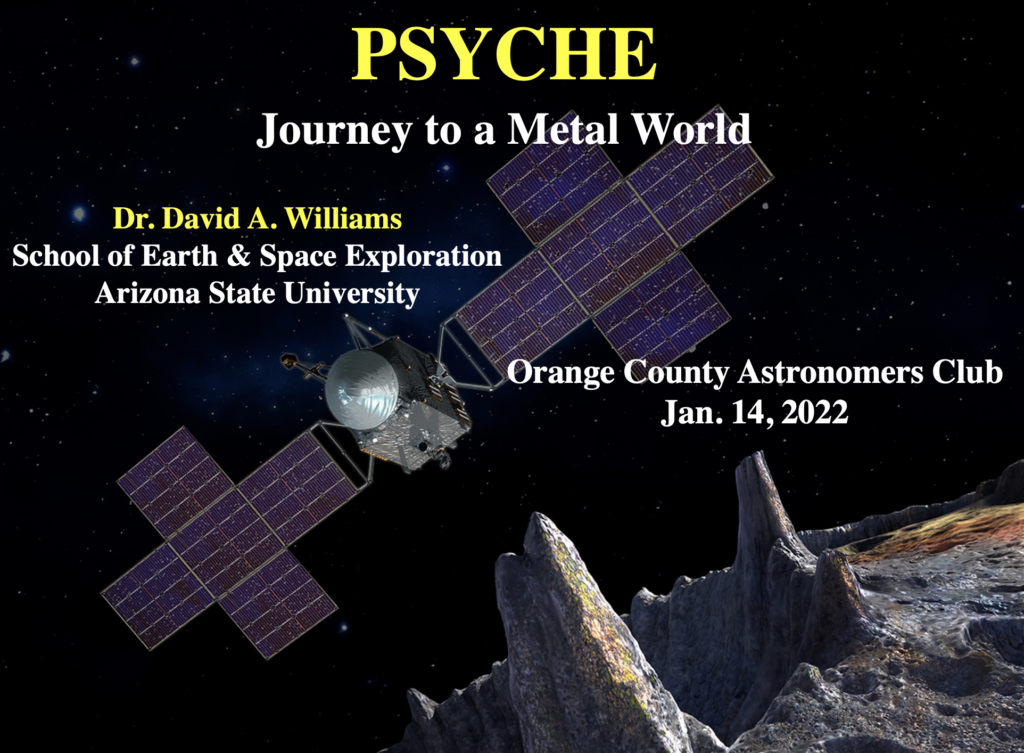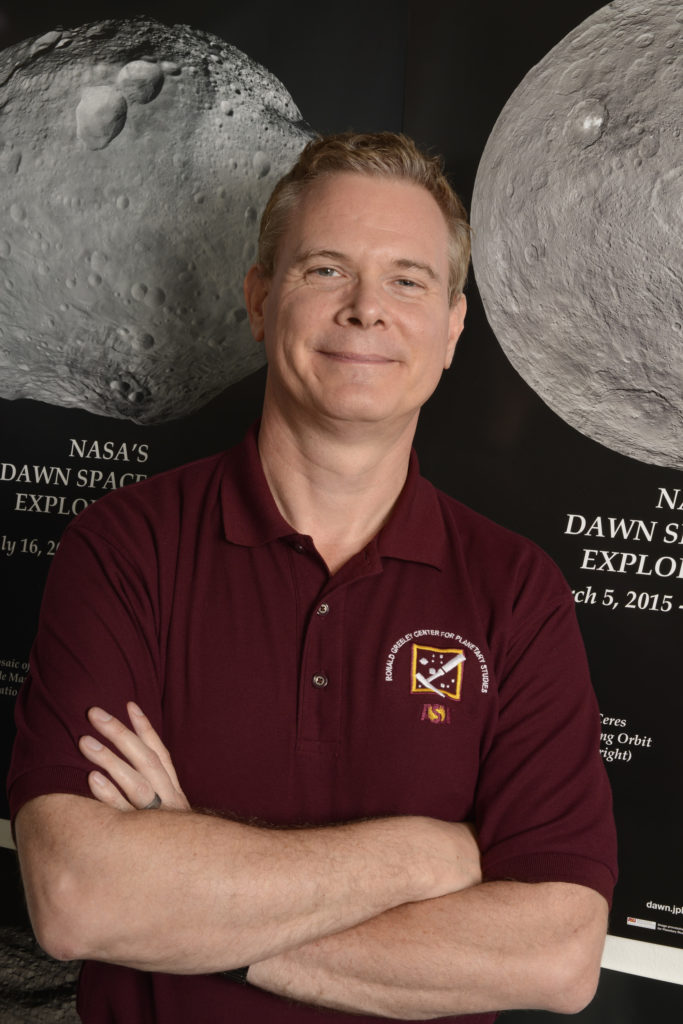
This is a free and open to the public online event, to attend please register with zoom by clicking here.

NASA selected Psyche as the 14th Discovery mission on Jan. 4, 2017. Led by Arizona State University, Psyche will be the first orbiter of a M-class asteroid, (16) Psyche. The mission design is based on NASA’s Dawn mission at Vesta & Ceres, and uses instruments with a strong heritage from past missions. Our science objectives are to answer the following questions: 1) Is Psyche an exposed planetary core, or did it never undergo melting? 2) What are the relative ages of features on its surface? 3) Do small metal-rich bodies incorporate light elements expected to be inside Earth’s high-pressure core? 4) Did Psyche form under more oxidizing or more reducing conditions than Earth’s core? and 5) What is the topography of this metal world? Psyche will launch in Aug. 2022 and will enter orbit of (16) Psyche in Jan. 2026 for a 21-month nominal mission. Psyche will study the surface using a pair of multispectral imagers (clear filter & 7 color filters, for surface morphology, stereo topography, and detection of certain key mineral classes), a gamma-ray & neutron spectrometer (for elemental abundances), and dual fluxgate magnetometers (to search for a remanent magnetic field). A gravity investigation using tracking of the spacecraft’s radio signal is also planned. Psyche will characterize surficial geologic features, topography, and compositions through four consecutively lower orbital phases, each optimized to obtain data to accomplish our science objectives. Psyche will: 1) map ≥80% of the surface with long-l filters at ≤500m/pix (assess metal to silicate fraction), 2) map ≥80% of the surface with short-l filters at ≤200m/pix (spectral detection of oldhamite, (Ca,Mg)S), 3) map ≥50% of the surface with clear filter at ≤200m/pix (crater counting), 4) map ≥80% of the surface with clear filter at ≤20m/pix (geologic mapping), and 5) determine the shape of (16) Psyche by mapping with clear filter over ≥80% of its surface with ≤200m/pix using stereo imaging techniques. This presentation discusses details of our mission.

Dr. David A. Williams is a Research Professor in the School of Earth and Space Exploration at Arizona State University, Tempe, Arizona. Dr. Williams is the Director of the Ronald Greeley Center for Planetary Studies, a NASA-supported planetary data center at ASU. He is also the Director of the NASA Planetary Aeolian Laboratory, which administers wind tunnels the Ames Research Center in California. David is currently performing research in volcanology and planetary geology, with a focus on planetary mapping, geochemical, and remote sensing studies. His current research focusses on planetary geologic mapping of bodies across the Solar System, and computer modeling of the physical and geochemical evolution of lava flows in a variety of planetary environments. He was involved with NASA’s Magellan Mission to Venus, Galileo Mission to Jupiter, Dawn Mission to asteroid Vesta and dwarf planet Ceres, and ESA’s Mars Express orbiter mission. He is a member of the Janus camera team for the ESA JUICE mission, and he is currently Deputy Imager Lead and a Co-Investigator on NASA’s Psyche Mission, scheduled to launch in August 2022. In 2014 David was elected a Fellow of the Geological Society of America, and asteroid 10,461 DAWILLIAMS was named in his honor.
ASU Psyche Mission: https://psyche.asu.edu/
JPL Psyche Mission: https://www.jpl.nasa.gov/missions/psyche
Website: https://rgcps.asu.edu/dawilliams/
Facebook: https://www.facebook.com/profile.php?id=10023395
Twitter: @davidaw222
Instagram: @davidaw222